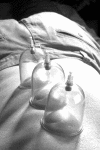A public health agenda for traditional, complementary, and alternative medicine
- PMID: 12356597
- PMCID: PMC3221447
- DOI: 10.2105/ajph.92.10.1582
A public health agenda for traditional, complementary, and alternative medicine
Abstract
Traditional medicine (a term used here to denote the indigenous health traditions of the world) and complementary and alternative medicine (T/CAM) have, in the past 10 years, claimed an increasing share of the public's awareness and the agenda of medical researchers. Studies have documented that about half the population of many industrialized countries now use T/CAM, and the proportion is as high as 80% in many developing countries. Most research has focused on clinical and experimental medicine (safety, efficacy, and mechanism of action) and regulatory issues, to the general neglect of public health dimensions. Public health research must consider social, cultural, political, and economic contexts to maximize the contribution of T/CAM to health care systems globally.
Figures








References
-
- Eisenberg DM, Davis RB, Ettner SL, et al. Trends in alternative medicine use in the United States, 1990–1997: results of a follow-up national survey. JAMA. 1998;280:1569–1575. - PubMed
-
- MacLennan AH, Wilson DH, Taylor AW. Prevalence and cost of alternative medicine in Australia. Lancet. 1996;347:569–573. - PubMed
-
- Health Canada. Perspectives on complementary and alternative health care. A collection of papers prepared for Health Canada. Available (in PDF format) at: http://www.hc-sc.gc.ca/hppb/healthcare/cahc/. Accessed July 18, 2002.
-
- Bannerman RH. Traditional Medicine and Health Care Coverage. Geneva, Switzerland: World Health Organization; 1993.
Publication types
MeSH terms
Grants and funding
LinkOut - more resources
Full Text Sources
Medical
Miscellaneous

